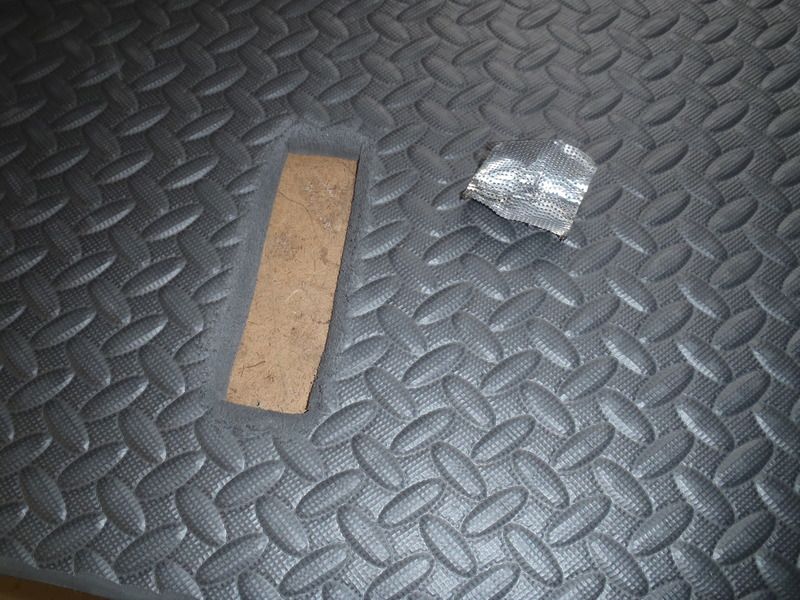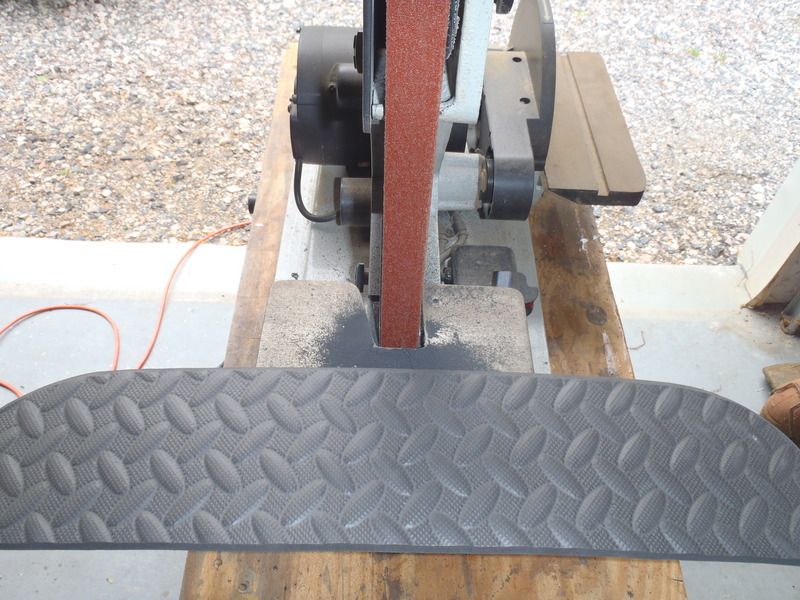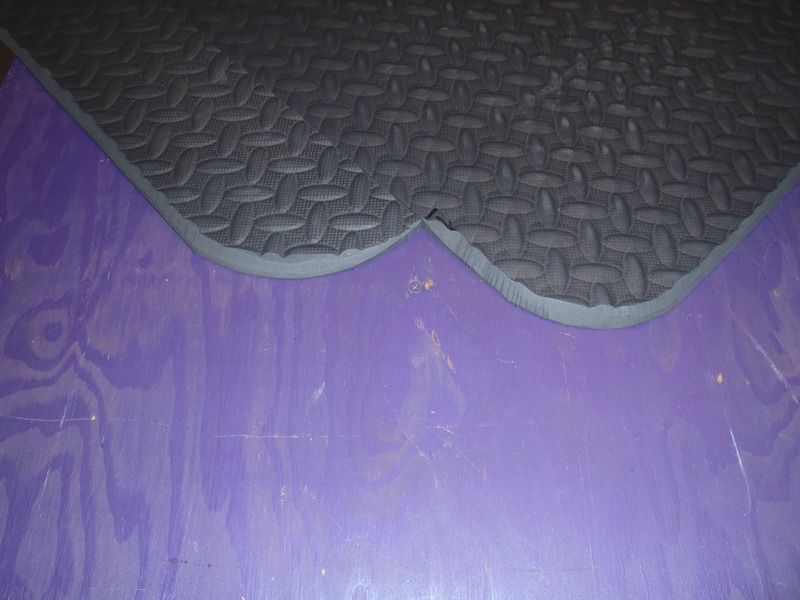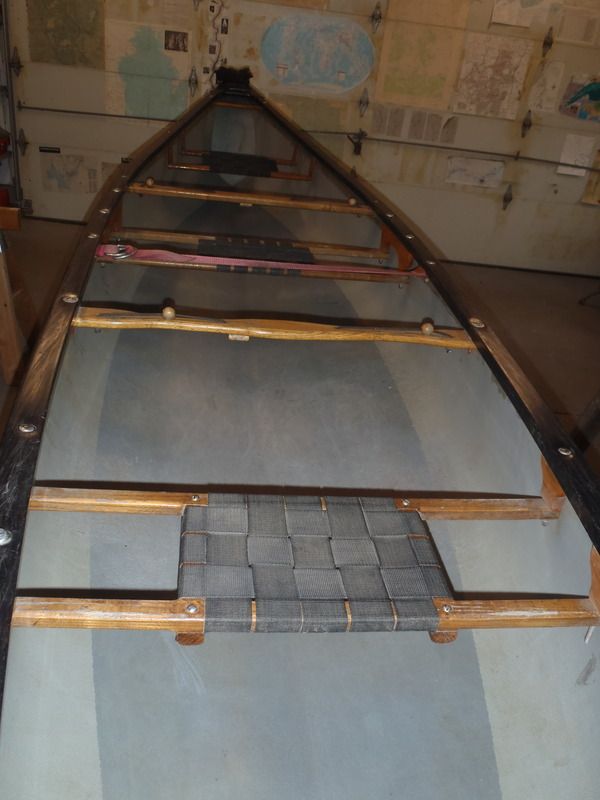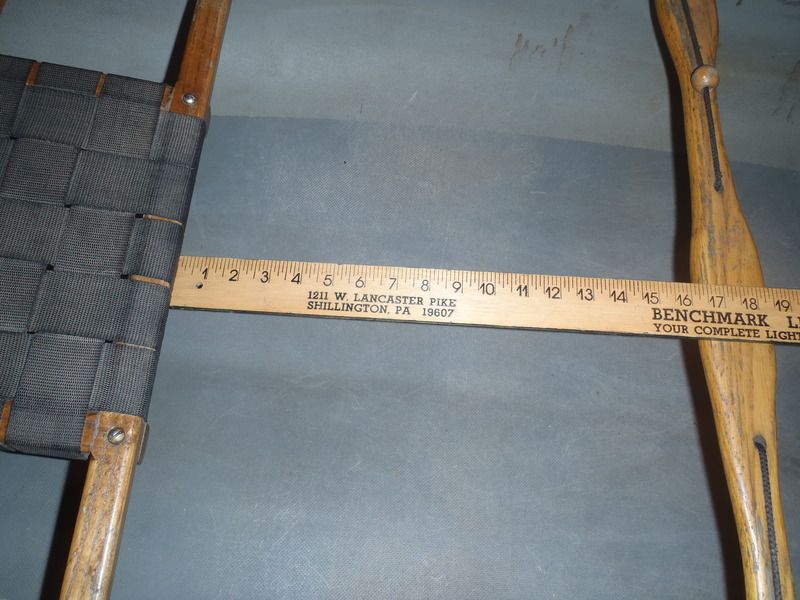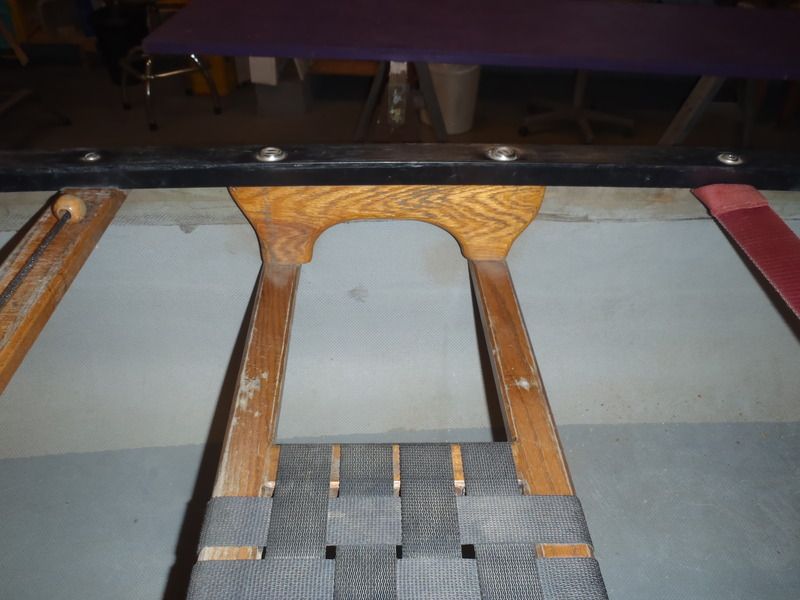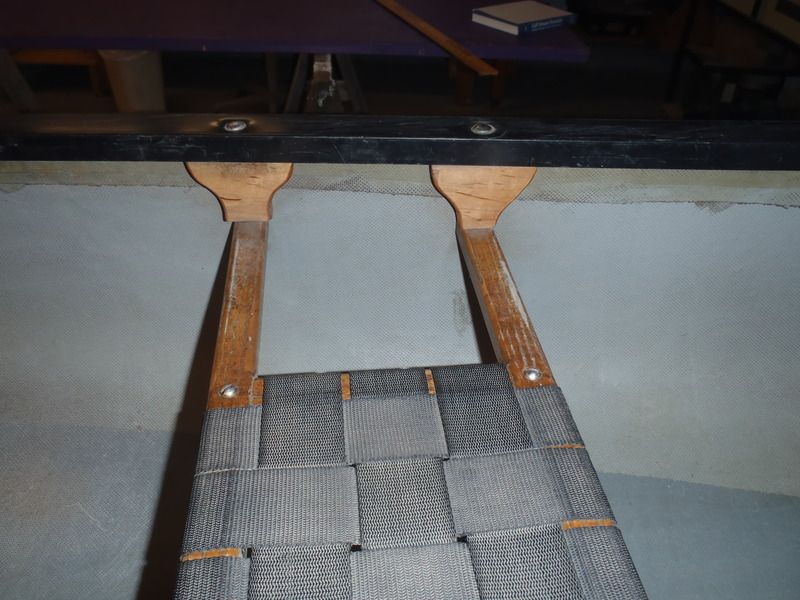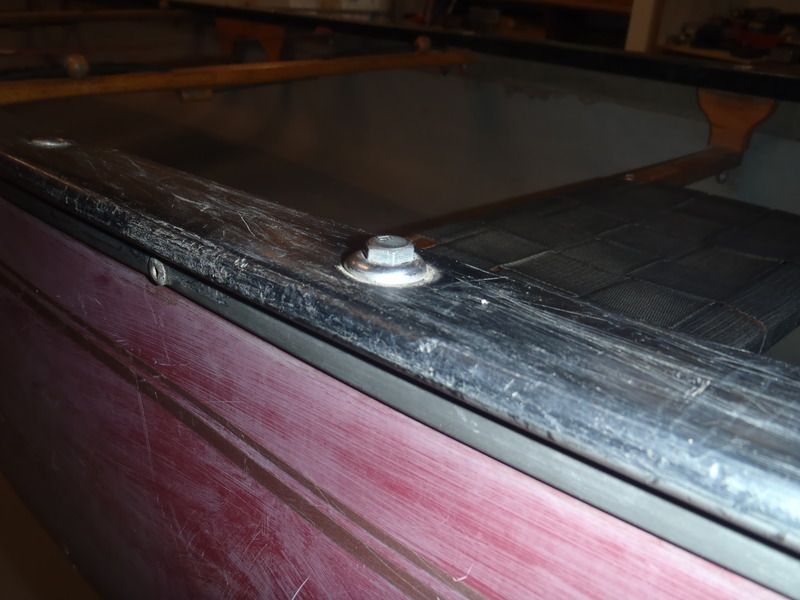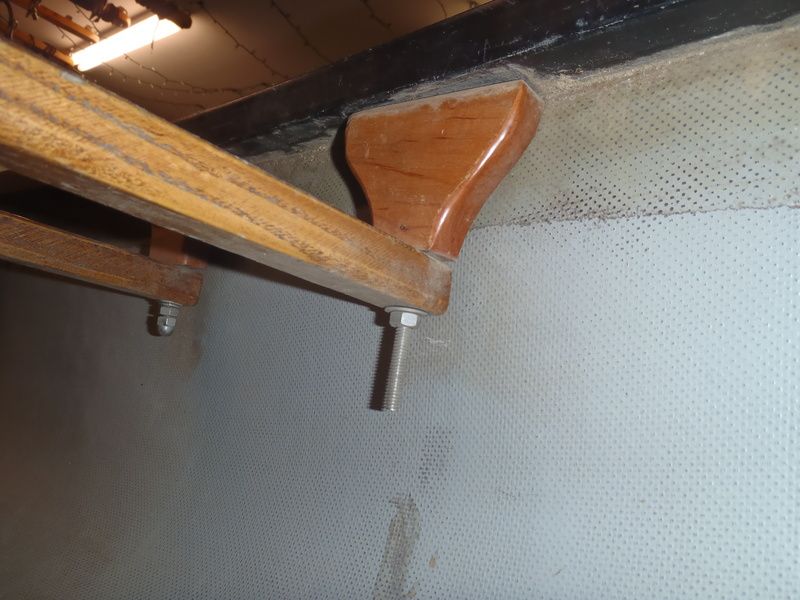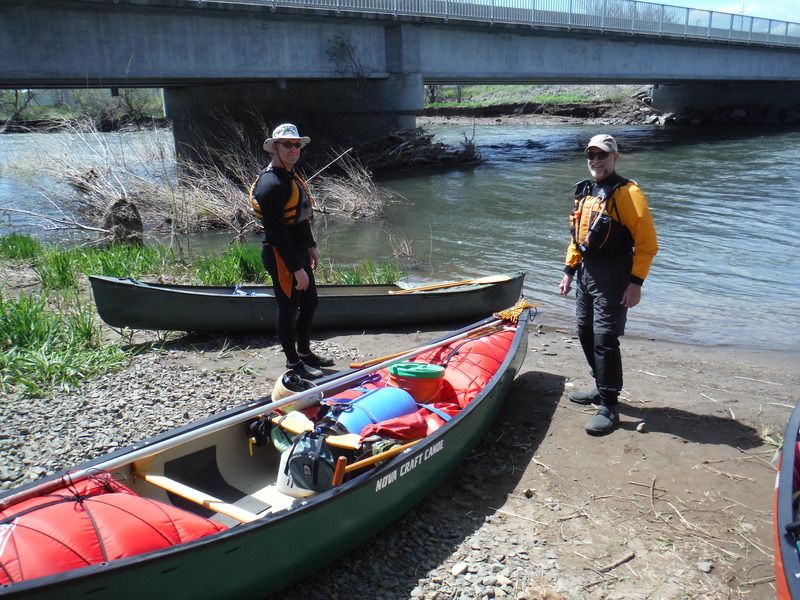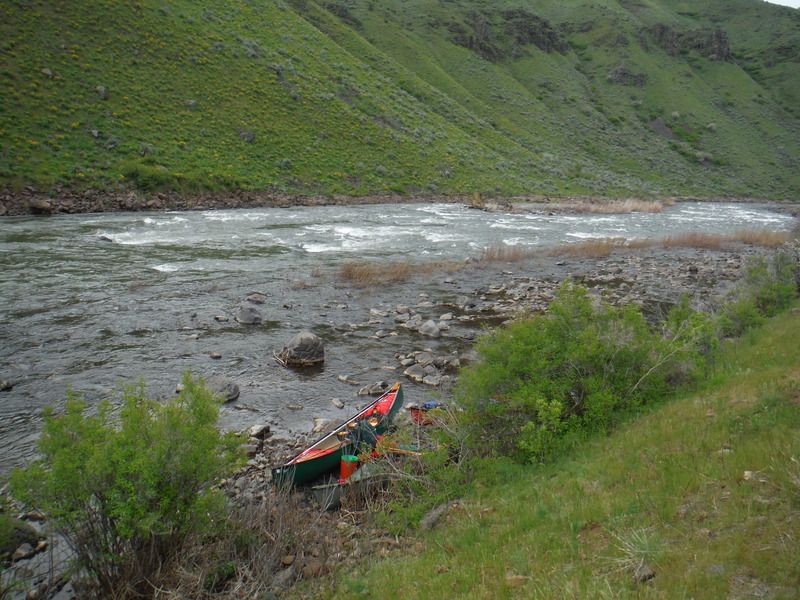G
Guest
Guest
Our old Vermont era Royalex Explorer is still in excellent condition. It needed new seats and thwarts when I bought it used, and I first set it up as a factory placement tandem, and then re-rebuilt it as a peculiar big boy soloized paddling, poling and sailing tripper, with a stoutly truss hung solo seat, padded kneeling thwart/sail mount, float bag and spray cover attachment points, D-rings and webbing loops.
Several issues: We have better solo paddling boats. My sons had but a brief affair with poling, and in any case there are too many crosswise things in the way to move around much in the current Explorer outfitting. It sails OK, but again, better boats for that purpose. Too many compromises made a canoe that didn’t really shine at any one purpose.
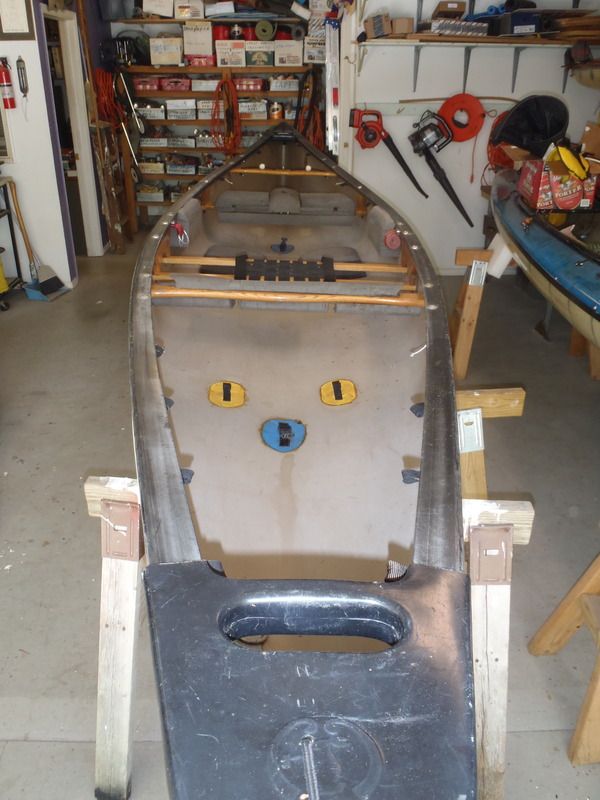
I am reluctant to disassemble and rebuild the Explorer, but it isn’t getting much use, and a tale of the scale may show why. Having just shouldered it into the shop under a double-D ring strap yoke I’m guessing 75+ lbs. A similar vintage tandem seat RX Explorer was listed at 70 - 72 lbs, depending on the catalog year. Time to hang Tom Dooley from the Taylor shop scale.
Good gugga mugga, 83 freaking lbs. The fugly kevlar felt skid plates the original owner installed probably account for a few pounds, but that must be some dang thick Royalex (with aluminum insert vinyl gunwales). No wonder the Explorer hasn’t been used lately.
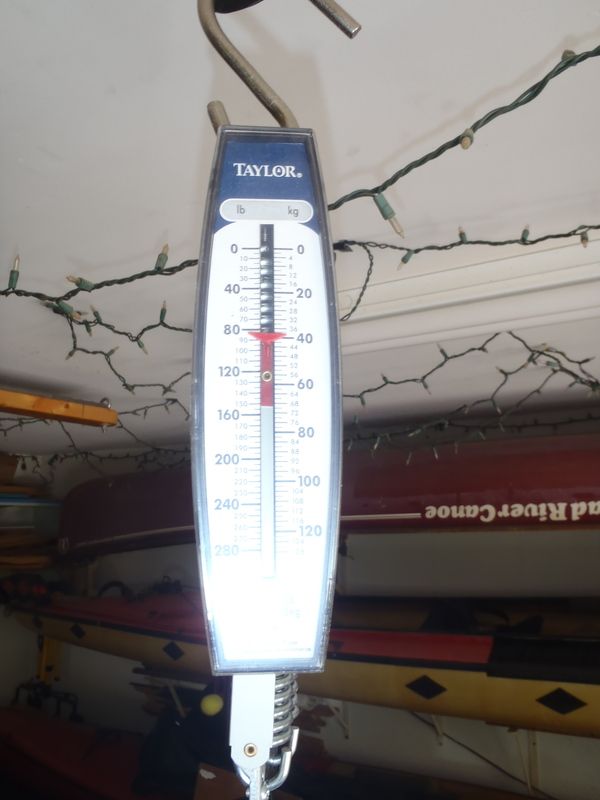
Yup, that weigh-in resolved my dithering. I’m going to remove the kneeling thwart, gut most of the minicel foam stumbling hazards and move one thwart forward*, leaving open boat poling space in the middle. Two end thwarts, positioned 3 or 4 feet back of the stems in the old tandem seat holes and the solo seat on beefy truss hangers (installed with ¼ inch machine screws) should provide plenty of lateral support, and with the rolled up strap yoke ample of walk around room amidships and beyond.
(OK, I didn’t move that thwart; poled from the front facing the seat Chip-style that thwart, installed in the old stern seat holes, is deep in the stem in current location)
I’d love to get the RX poling Explorer back to its fighting weight of 72 lbs, but I don’t think that canoe was ever 72 lbs. IIRC it is a vintage 1991 hull (it oddly has no HIN), a year which saw some strangely overthick RX sheets produced.
I weighed everything I have or will be removing, 4 lbs 7 oz. Every little bit helps. The few remaining bits of minicel, webbing loops and float bag cord don’t weight more than a few ounces all together, and the D-rings pads vinyl are well epoxied in place and ain’t coming off without destroying them.
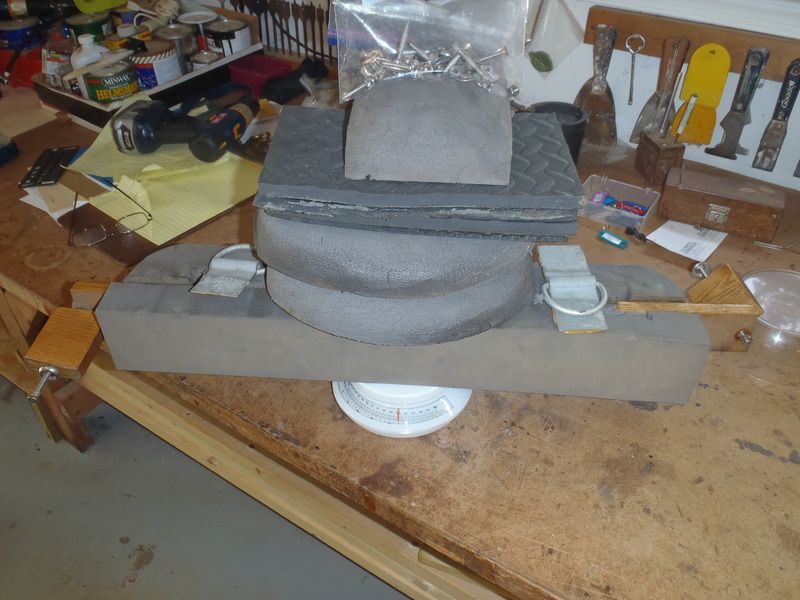
The fugly hard plastic D-ring pads did though chisel out easily; not sure why I ever put those awful things in, they suck (and rusted).

The biggest weight savings remaining would involve chiseling off the stupid kevlar felt skid plates and replacing them with Dynel, and I really don’t want to go there, despite believing there are several pounds of over rich resin application saturating that felt.
My contact cement and minicel application was good, even back in the day. Really good; the only way to get out some of the pricier thick minicel for later reuse was to set a radiant oil heater under the hull and incrementally peel up and heat gun blast the old contact cement.
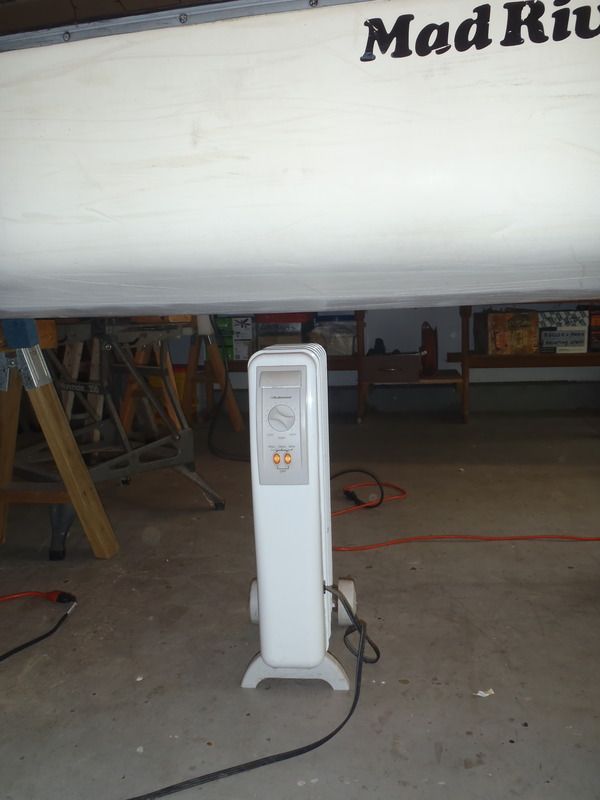

I’m cheap and minicel isn’t. Saving the thick custom carved stuff for future use was worthwhile.
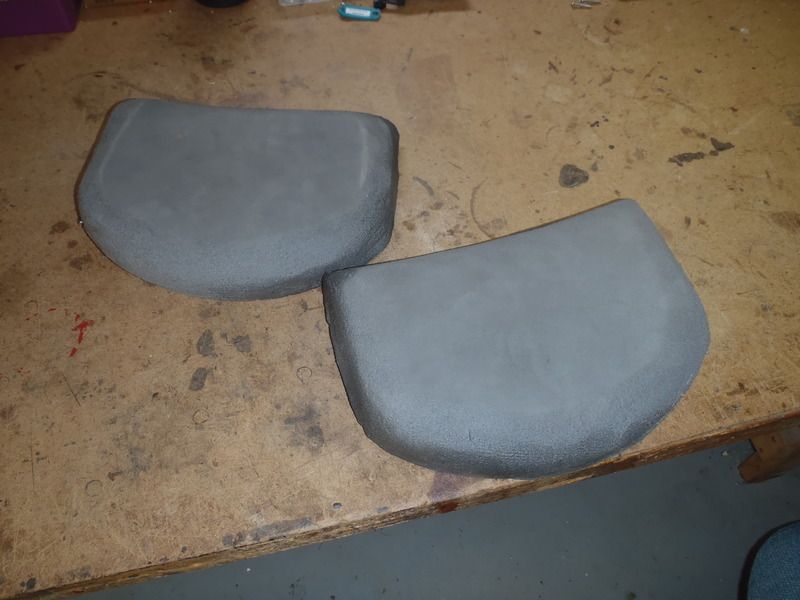
I tried some acetone and elbow grease to remove the contact cement residue fugly. OK, I’m not going that route.

But that residue offends my aesthetic senses, plus the D-ring/fastex buckle for one float bag is in a possibly trod-underfoot poling area. That D-ring pad is epoxied in place and is not coming out intact, and I like the buckle system for over-bag webbing straps (there is another female buckle receiver already installed under each stem, which is a horribly squinchy place to install or remove hardware).
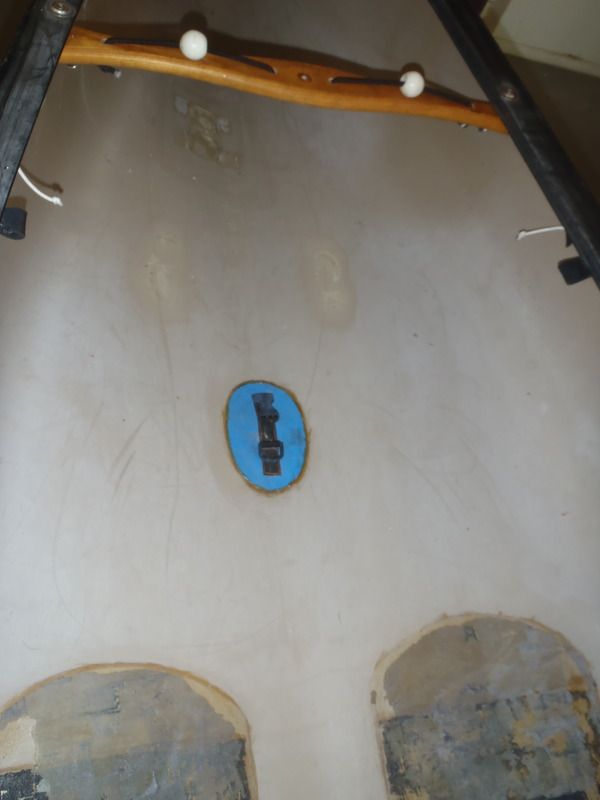
Re-weighed with solo seat and two thwarts was just under 79 lbs. As expected; that is some beefy Royalex. I still have some weight to add, Blue Water rescue rope painters. . . . and maybe a couple sheets of minicel exercise flooring.
My thinking to hide the fugly residue and protect the buckle is to install two sheets of minicel exercise flooring, with radiused corners and beveled edges, one with a little rectangle cutout for the-D ring and buckle.
That exercise flooring is only 3/8 inch thick, very durable if installed embossed side up and, of course, non-slip.
Poler thoughts on an exercise flooring floor?
The funky Explorer has (already had) pole keepers notches in the stern thwart minicel padding. There was a reason the stern thwart was (hint: comfort) padded, but I doubt even Alan can correctly guess why.
One-piece wood pole in keeper notches.

Two piece take-apart aluminum pole:
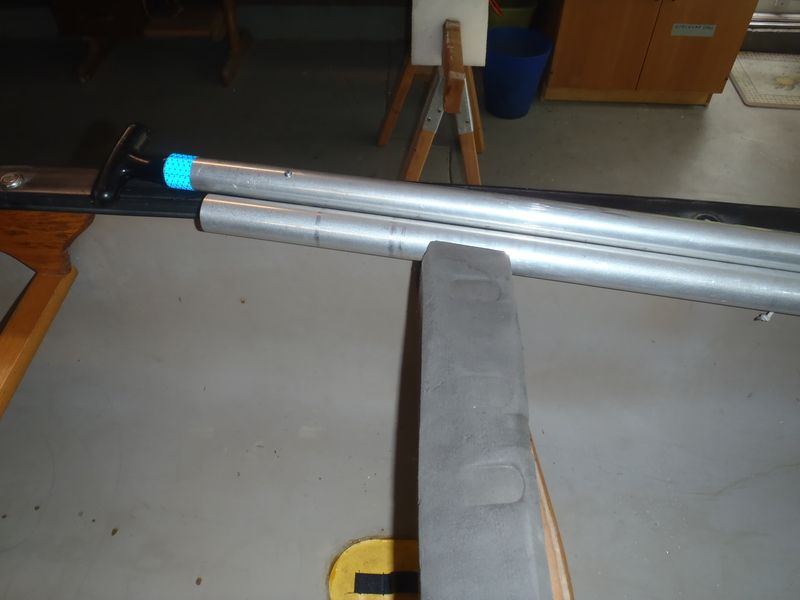
Take-apart aluminum pole half with stand up paddle blade (thumb button attachment)

The balls on the thwart bungees make it much easier to stuff paddle blades or pole ends under.
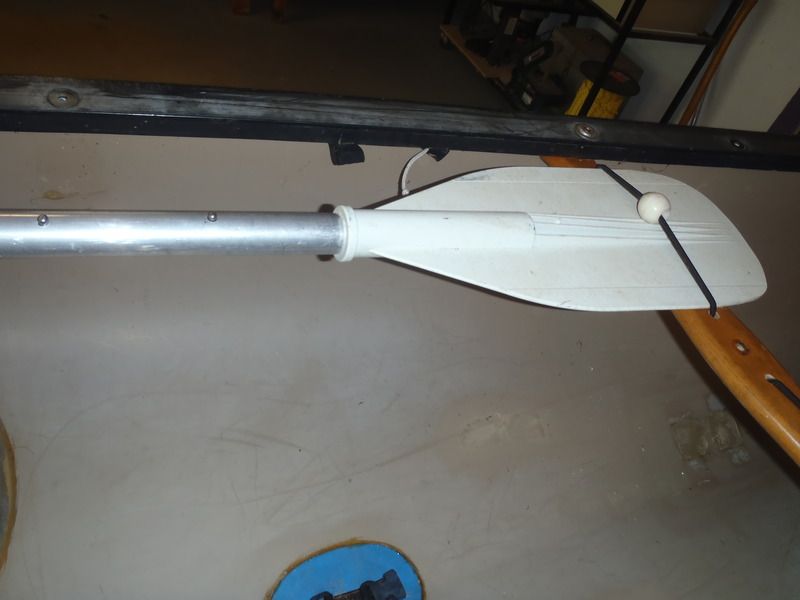
Fully dressed, with seat pad, back band and stem spray covers it is a pretty canoe. Double D-ring webbing strap, sturdy enough for shouldering the initial 83 lb weight and probably more.
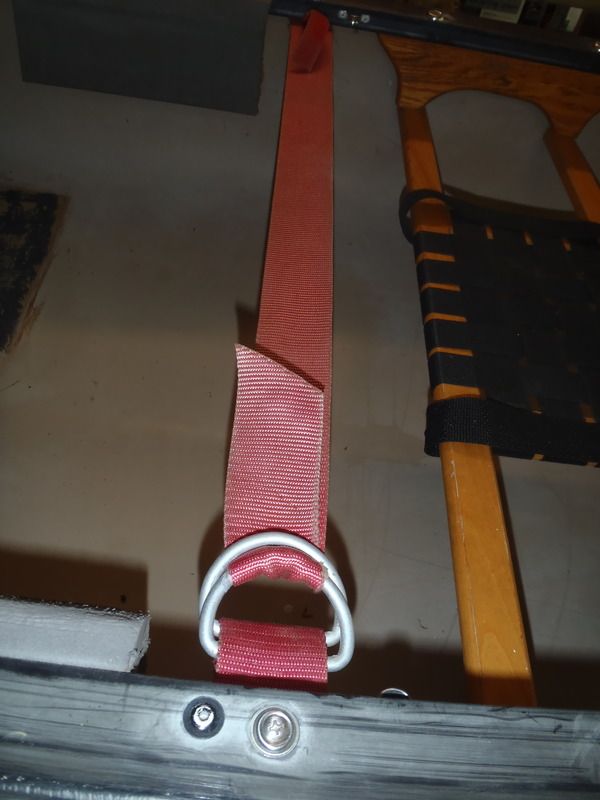
Yoke strap rolled up and inwale knee bumpers
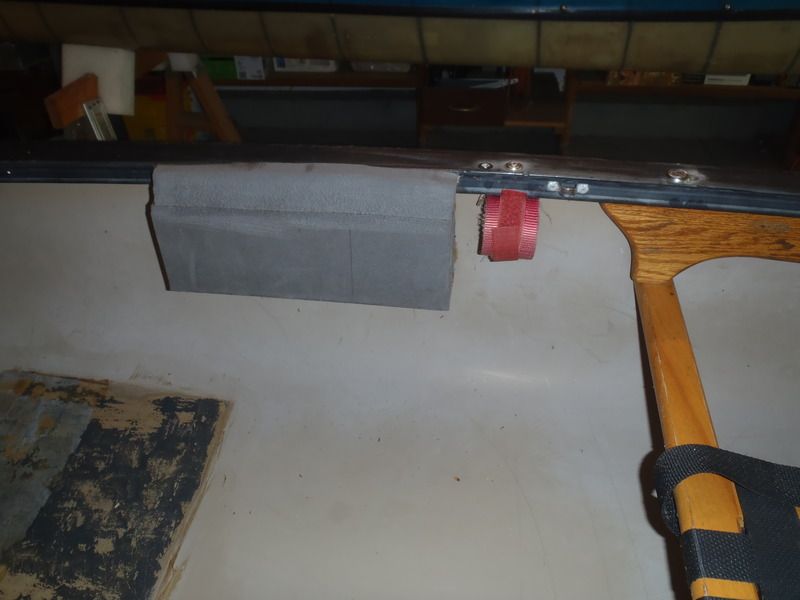
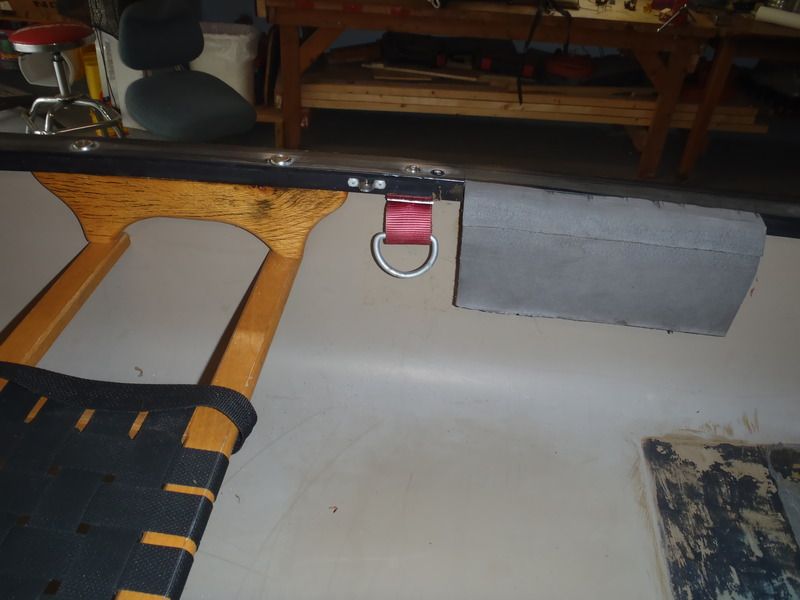
Partial spray covers (not occluding the open poling space)
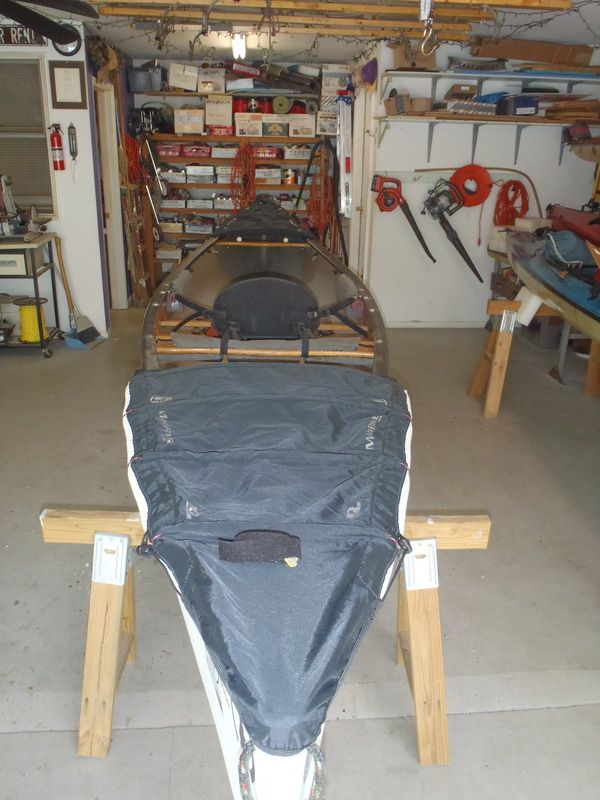
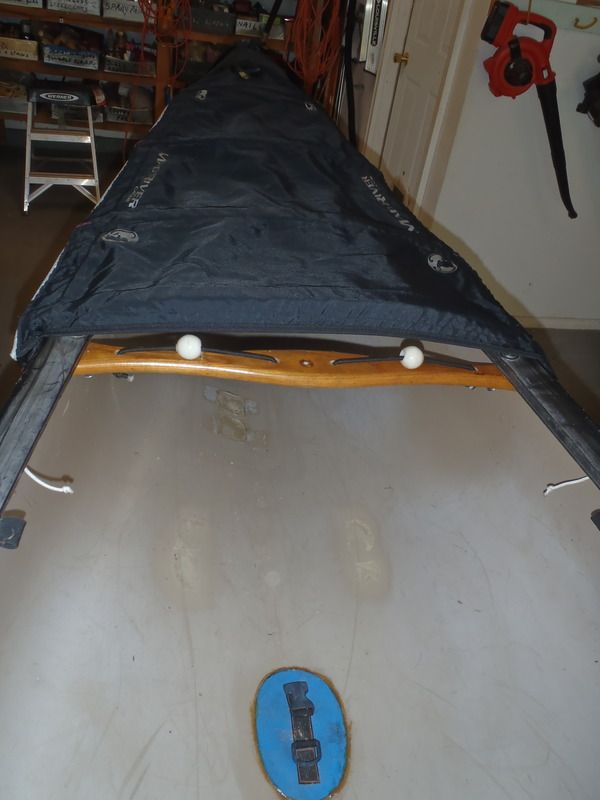
Barcalounger comfort seating.

Even custom graphics; overweight rabbit in the ferns
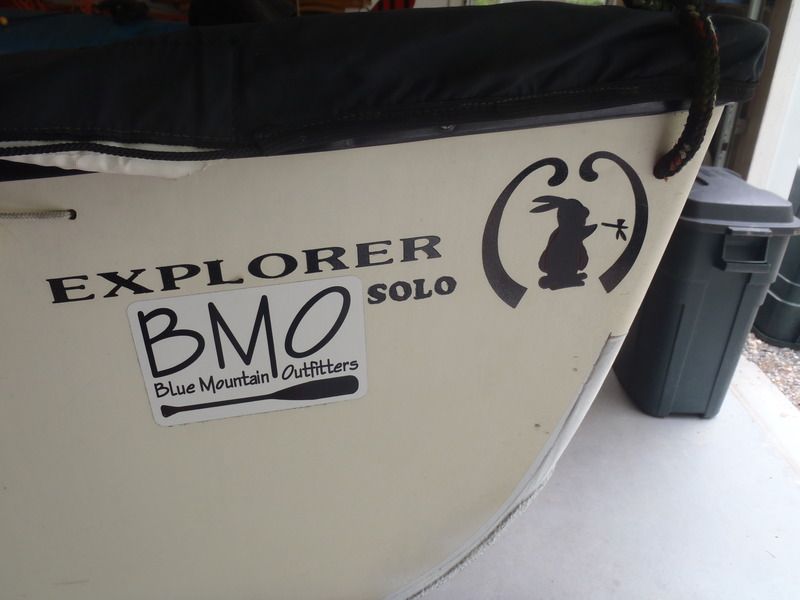
Passamaquoddy builder Tomah Joseph rabbit in the ferns Gogetch (page 87 of The Bark and Skin Boats of North America)
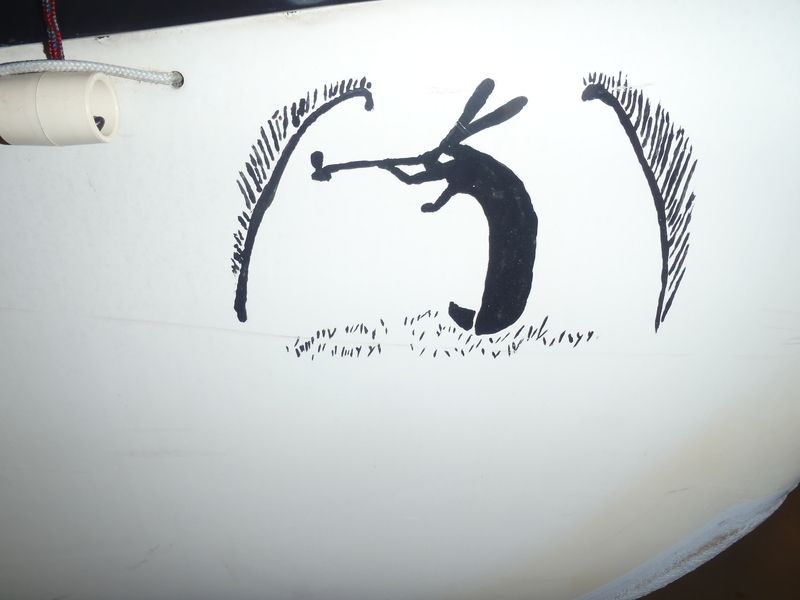
dang, now I kinda want to keep it.
79lbs. Nah, somebody with a strong back make me an offer I can’t refuse. I’ll even help load it on your car one last time.
Several issues: We have better solo paddling boats. My sons had but a brief affair with poling, and in any case there are too many crosswise things in the way to move around much in the current Explorer outfitting. It sails OK, but again, better boats for that purpose. Too many compromises made a canoe that didn’t really shine at any one purpose.

I am reluctant to disassemble and rebuild the Explorer, but it isn’t getting much use, and a tale of the scale may show why. Having just shouldered it into the shop under a double-D ring strap yoke I’m guessing 75+ lbs. A similar vintage tandem seat RX Explorer was listed at 70 - 72 lbs, depending on the catalog year. Time to hang Tom Dooley from the Taylor shop scale.
Good gugga mugga, 83 freaking lbs. The fugly kevlar felt skid plates the original owner installed probably account for a few pounds, but that must be some dang thick Royalex (with aluminum insert vinyl gunwales). No wonder the Explorer hasn’t been used lately.

Yup, that weigh-in resolved my dithering. I’m going to remove the kneeling thwart, gut most of the minicel foam stumbling hazards and move one thwart forward*, leaving open boat poling space in the middle. Two end thwarts, positioned 3 or 4 feet back of the stems in the old tandem seat holes and the solo seat on beefy truss hangers (installed with ¼ inch machine screws) should provide plenty of lateral support, and with the rolled up strap yoke ample of walk around room amidships and beyond.
(OK, I didn’t move that thwart; poled from the front facing the seat Chip-style that thwart, installed in the old stern seat holes, is deep in the stem in current location)
I’d love to get the RX poling Explorer back to its fighting weight of 72 lbs, but I don’t think that canoe was ever 72 lbs. IIRC it is a vintage 1991 hull (it oddly has no HIN), a year which saw some strangely overthick RX sheets produced.
I weighed everything I have or will be removing, 4 lbs 7 oz. Every little bit helps. The few remaining bits of minicel, webbing loops and float bag cord don’t weight more than a few ounces all together, and the D-rings pads vinyl are well epoxied in place and ain’t coming off without destroying them.

The fugly hard plastic D-ring pads did though chisel out easily; not sure why I ever put those awful things in, they suck (and rusted).

The biggest weight savings remaining would involve chiseling off the stupid kevlar felt skid plates and replacing them with Dynel, and I really don’t want to go there, despite believing there are several pounds of over rich resin application saturating that felt.
My contact cement and minicel application was good, even back in the day. Really good; the only way to get out some of the pricier thick minicel for later reuse was to set a radiant oil heater under the hull and incrementally peel up and heat gun blast the old contact cement.


I’m cheap and minicel isn’t. Saving the thick custom carved stuff for future use was worthwhile.

I tried some acetone and elbow grease to remove the contact cement residue fugly. OK, I’m not going that route.

But that residue offends my aesthetic senses, plus the D-ring/fastex buckle for one float bag is in a possibly trod-underfoot poling area. That D-ring pad is epoxied in place and is not coming out intact, and I like the buckle system for over-bag webbing straps (there is another female buckle receiver already installed under each stem, which is a horribly squinchy place to install or remove hardware).

Re-weighed with solo seat and two thwarts was just under 79 lbs. As expected; that is some beefy Royalex. I still have some weight to add, Blue Water rescue rope painters. . . . and maybe a couple sheets of minicel exercise flooring.
My thinking to hide the fugly residue and protect the buckle is to install two sheets of minicel exercise flooring, with radiused corners and beveled edges, one with a little rectangle cutout for the-D ring and buckle.
That exercise flooring is only 3/8 inch thick, very durable if installed embossed side up and, of course, non-slip.
Poler thoughts on an exercise flooring floor?
The funky Explorer has (already had) pole keepers notches in the stern thwart minicel padding. There was a reason the stern thwart was (hint: comfort) padded, but I doubt even Alan can correctly guess why.
One-piece wood pole in keeper notches.

Two piece take-apart aluminum pole:

Take-apart aluminum pole half with stand up paddle blade (thumb button attachment)

The balls on the thwart bungees make it much easier to stuff paddle blades or pole ends under.

Fully dressed, with seat pad, back band and stem spray covers it is a pretty canoe. Double D-ring webbing strap, sturdy enough for shouldering the initial 83 lb weight and probably more.

Yoke strap rolled up and inwale knee bumpers


Partial spray covers (not occluding the open poling space)


Barcalounger comfort seating.

Even custom graphics; overweight rabbit in the ferns

Passamaquoddy builder Tomah Joseph rabbit in the ferns Gogetch (page 87 of The Bark and Skin Boats of North America)

dang, now I kinda want to keep it.
79lbs. Nah, somebody with a strong back make me an offer I can’t refuse. I’ll even help load it on your car one last time.

